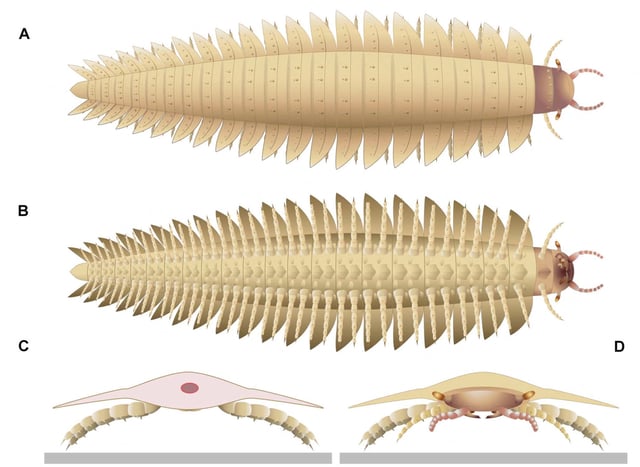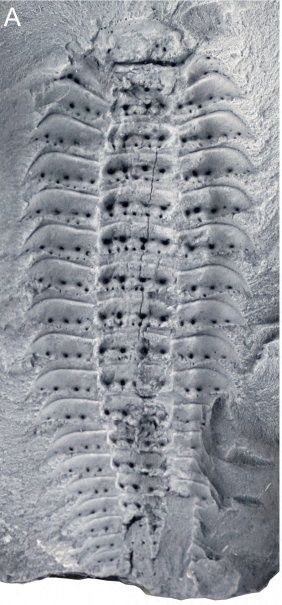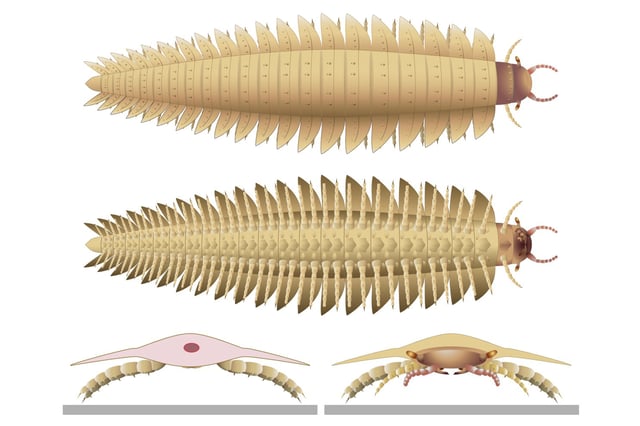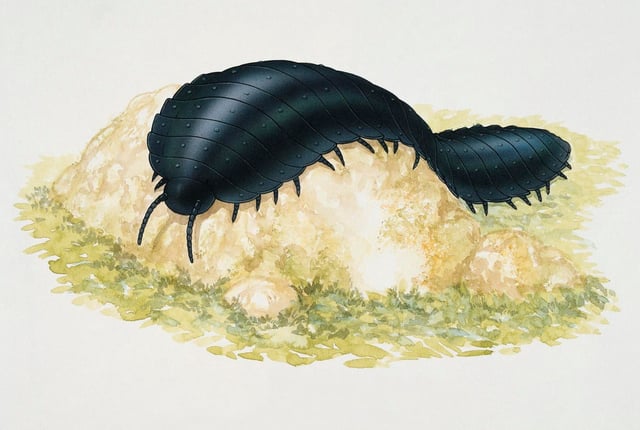Overview
- Arthropleura was a giant arthropod that lived approximately 300 million years ago, reaching lengths of up to 9 feet.
- Researchers used advanced imaging techniques to study well-preserved juvenile fossils found in France, reconstructing the creature's head for the first time.
- The head features a combination of millipede and centipede characteristics, with stalked eyes and mandibles suited for grinding vegetation.
- The study suggests Arthropleura's evolutionary position as a close relative of both millipedes and centipedes, providing new insights into myriapod evolution.
- Despite its size, Arthropleura's diet likely consisted of detritus, and it may have had a semi-aquatic lifestyle, as indicated by its anatomical features.



